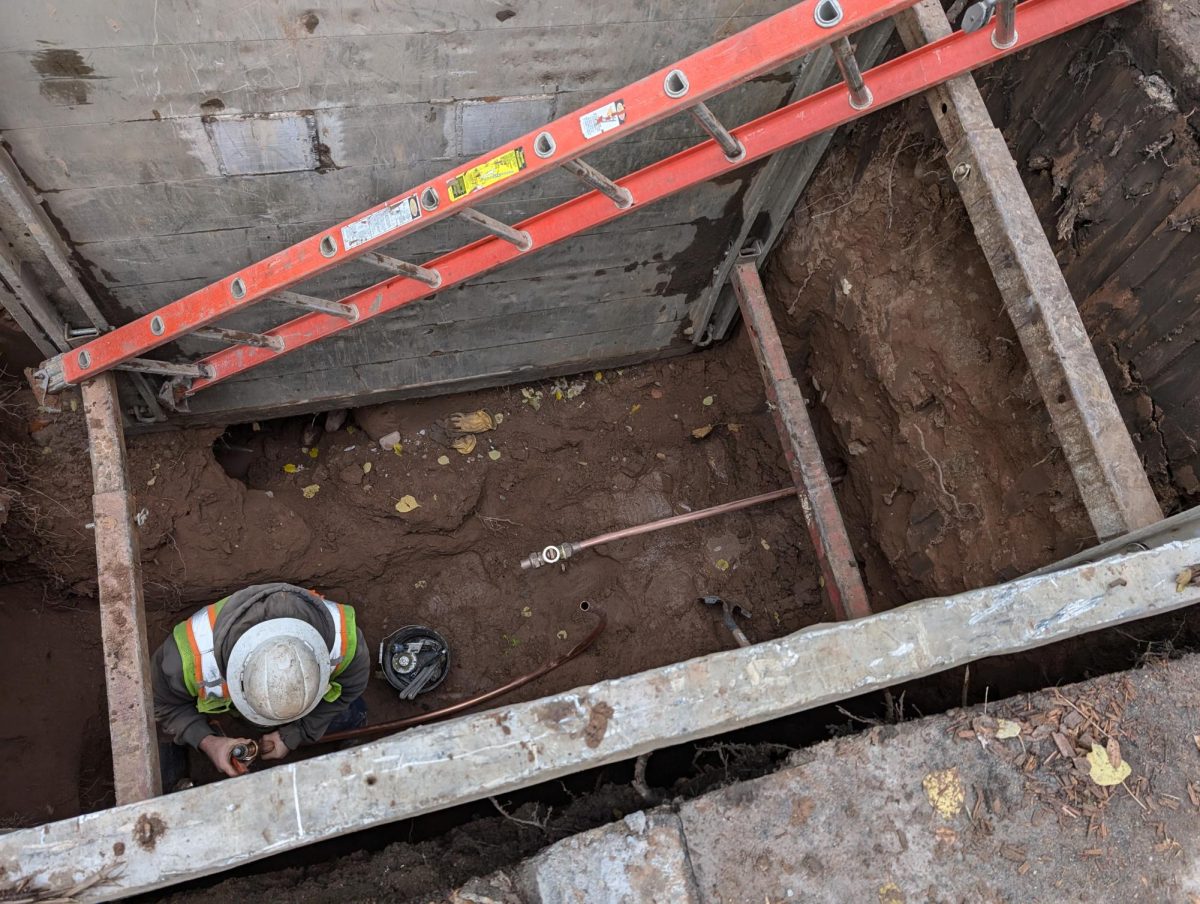When Minneapolis resident Jamie Laudert took her two-year-old kid to get a well-child check, he tested high for lead. Laudert was surprised by how many surfaces in her house had lead in them.
“It was extremely nerve-wracking to know that something in our house, which we live in and spend so much time in, was doing something damaging to his brain and brain development, potentially,” Laudert said.
Laudert’s home was not the only one with lead in the city. Over 40,000 properties in Minneapolis will have their lead pipes replaced as part of a citywide initiative to end lead poisoning.
The City of Minneapolis began the 10-year work replacing aging water service lines around Minneapolis with federal and state funding at no cost to homeowners.
The water service lines being replaced do not directly bring water to the property but rather connect to water mains which bring water to the property, Minneapolis Water Treatment and Distribution Director Annika Bankston said.
The program is not “opt-in,” Bankston said.
Minnesota state legislation requires prioritized replacement to areas with lower-income residents, children with elevated blood lead levels and coordinating with other capital improvement projects.
Lead was used typically in homes built up until 1930 because of how flexible it is, Bankston said.
“As you’re trying to make a connection and route it into a basement, maybe around trees or things like that, it’s bendable,” Bankston said. “It’s also very long-lasting and very robust. It doesn’t leak. It doesn’t have those problems.”
Anna Schliep, the drinking water coordinator at the Minnesota Department of Health, said lead in drinking water is colorless and tasteless, with the only way to tell is by testing. Residents can order a free lead testing kit from the City of Minneapolis’ website to test their water.
Bankston said it is important to understand the water is safe to drink with no amount of lead being safe.
Residents who have a lead service line have already received a letter in the mail about the City’s efforts to replace the line and how to minimize lead exposure in drinking water. Council Member Elliott Payne (Ward 1) said he received a letter as his home was made in the 1920s.
This focus on eliminating lead is partially because of the U.S. Environmental Protection Agency under President Joe Biden’s administration.
“Part of the mandate is to notify everybody of the potential for having a lead service line and a lot of these lines have been in use for decades,” Payne said. “One of the things that the Biden administration wants to do is really at a national level, make sure that we don’t have another Flint water crisis again.”
The city of Flint, Michigan changed the main water supply from Lake Huron to the Flint River in 2014, causing water distribution pipes to corrode and release lead into the drinking water, according to the Centers for Disease Control.
A corrosion control chemical called orthophosphate is added to the water in Minneapolis, creating a protective coating on lead service lines on the interior surface, Bankston said.
“In essence, it forms a barrier between the lead that’s in the service line and the water that’s moving through it,” Bankston said. “We’ve never had any issues with high levels of lead because of our robust treatment. So the drinking water in Minneapolis is safe and protected from lead.”
Payne, who represents Como, said the neighborhood is one of the biggest areas in Minneapolis with lead service lines and urged renters to request a lead testing kit and notify their landlord. Residents can search their property on the Minnesota Department of Health’s website to see if they have lead service lines.
Bankston said the removal of lead service lines is important to help protect people now and in the future.
“Even what are considered safe levels of lead are, quite frankly, unwanted levels of lead,” Bankston said. “So moving forward, removing lead service lines will eliminate a potential source of lead really forever in the future.”














